explore Costa Rica
Corcovado National Park
Don't forget to book your vacation rentals with us
National Geographic named Corcovado National Park, right here in Costa Rica, the most biologically intense place in the world! This national park on the Osa Peninsula contains over five percent of the world’s animal population in less than 170 square miles — making it an absolute must-visit location for animal enthusiasts during a trip to Costa Rica!
However, Corcovado National Park offers much more than wildlife watching. This stunning national park is one of Central America’s most biodiverse places and encompasses many different ecosystems, including primary rainforest, cloud forest, mangrove swamps, and pristine beaches.
Before visiting Corcovado National Park in Costa Rica — read up on everything you need to know about this national park, including how to get there, when to visit, and how to stay safe while exploring one of Central America’s most biodiverse locations!
Overview of Corcovado National Park in Costa Rica
Unlike other national parks in Costa Rica, you cannot enter Corcovado National Park without an official guide. Because of this, you’ll want to read up on all the helpful information below about navigating Corcovado National Park.
Location
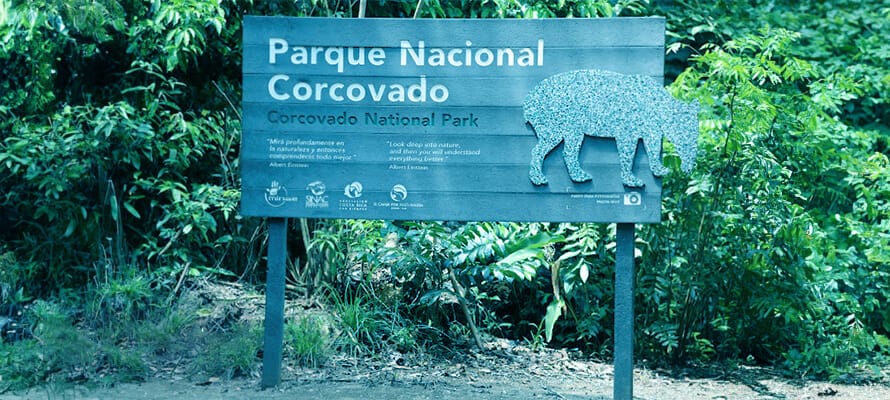
Corcovado National Park is located on the Osa Peninsula on Costa Rica’s South Pacific Coast. This national park is a bit off the beaten path — it’s a six-hour drive from San José and a seven-hour drive from Libera, where you’ll find the two major airports in Costa Rica. Corcovado National Park and the Osa Peninsula are closer to Panama than many of the popular attractions in Costa Rica.
Aside from Corcovado National Park, other points of interest on the Osa Peninsula include Golfo Dulce and Drake Bay. These are popular places to spot aquatic animals, especially humpback whales and dolphins, and should be visited during a trip to Corcovado National Park.
Hours & Cost
Corcovado National Park is open daily from 7 AM – 4 PM. The only exception is that the Sirena Ranger Station closes its doors to visitors during October — the peak of the rainy season. The cost to enter the park is $15 for adults and $5 for children.
It’s important to note that all visitors to Corcovado National Park must book a group or private tour with a local guide from a certified operator to enter the park. Usually, the cost of these tours covers your admission to the park. A tour can range from $100 – $1,000 per person, depending on whether you choose a hiking day tour or a multi-day tour that includes meals, accommodations, and transportation from nearby towns, like Puerto Jimenez and Drake Bay.
Sectors & Ranger Stations
Since Corcovado National Park is in such a remote location on the Osa Peninsula and is further from some of the more popular tourist attractions in Costa Rica, like Manuel Antonio National Park, Arenal Volcano, and the beaches on the Northern Pacific Coast — overnight trips to this national park are typical, since a quick day trip isn’t feasible unless you’re planning to stay somewhere on the Osa Peninsula, like Puerto Jiménez or Drake Bay.
There are five sectors of Corcovado National Park to explore, and each sector offers its own ranger station with unique accommodations and amenities. Here is an overview of the ranger stations in each sector within this national park:
#1
Sirena Ranger Station
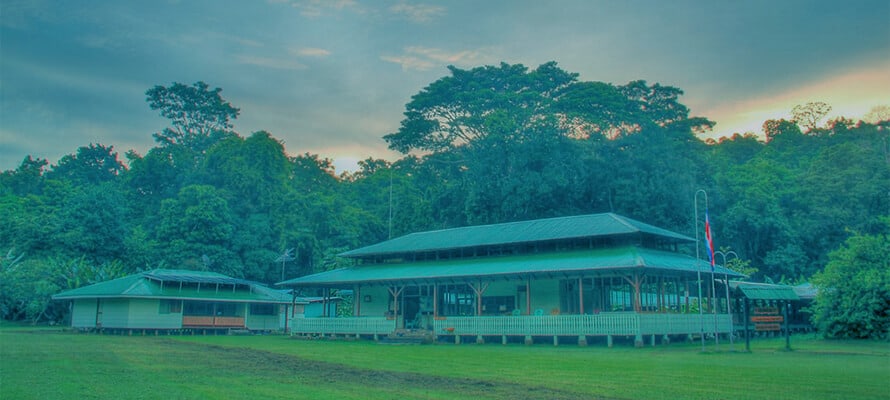
Sirena Ranger Station is the largest and most-visited station in Corcovado National Park. It’s considered the park’s headquarters and attracts scientists and naturalists who come to study the rich biodiversity found on the network of eight hiking trails offered at Sirena Station. If you are coming to Corcovado National Park on a day trip, you’ll probably spend the day in and around the Sirena Ranger Station.
Sirena Ranger Station offers basic amenities and camping areas for overnight tours, including tents, bunk-bed-style dorms with bathrooms and mosquito nets, and a small cafeteria. There is even a small grass landing strip here used for small airplanes. Most guided tours of Corcovado National Park will spend at least a day (if not more) at Sirena Ranger Station.
#2
San Pedrillo Ranger Station
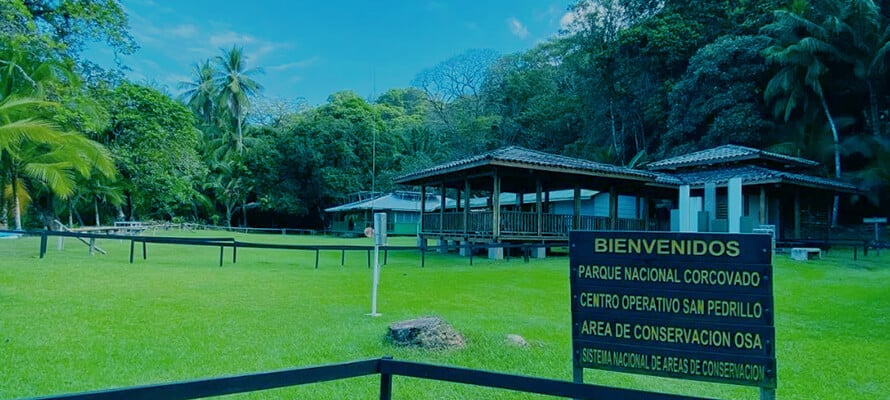
San Pedrillo Ranger Station is located on the northwest side of Corcovado National Park and can be reached on boat tours from Drake Bay in 30–45 minutes. The San Pedrillo Ranger Station is located right on the beach and is an excellent place for seeing beautiful plants and waterfalls on the network of trails. However, it doesn’t offer as many animals to see as the other sectors of the park.
You can visit the San Pedrillo Ranger Station on a day or overnight trip. If you’re staying overnight, you’ll only find outdoor camping facilities here, as well as outdoor showers and sanitary services. No food is available — all meals must be provided by your tour company — although there is drinking water at the ranger station.
#3
La Leona Ranger Station
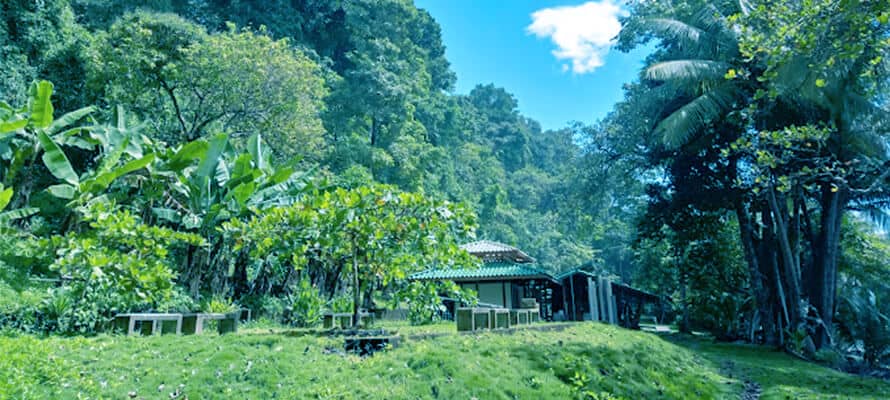
La Leona Ranger Station is located on the park’s south side, and it offers fewer trails and amenities than the San Pedrillo or Sirena Ranger Station (just an outdoor shower and bathroom). However, if you want to see some of Costa Rica’s sea turtle species, you’re in luck — you can watch baby sea turtles hatch on the beaches in La Leona during the nesting season.
#4
Los Patos Ranger Station
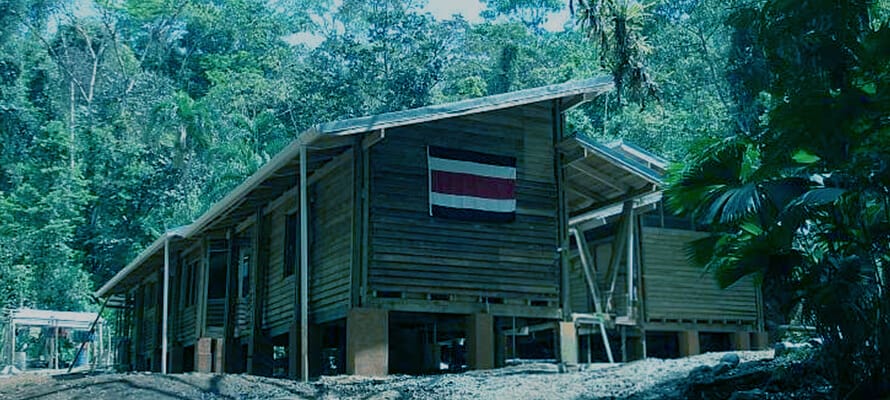
Los Patos Ranger Station is located on the park’s north side, and it’s pretty difficult to reach — you have to cross the Rincón River more than a dozen times to even arrive in the sector. Los Patos also only has one main trail, so it’s usually reserved for multi-day trips to Corcovado National Park.
#5
El Tigre Ranger Station
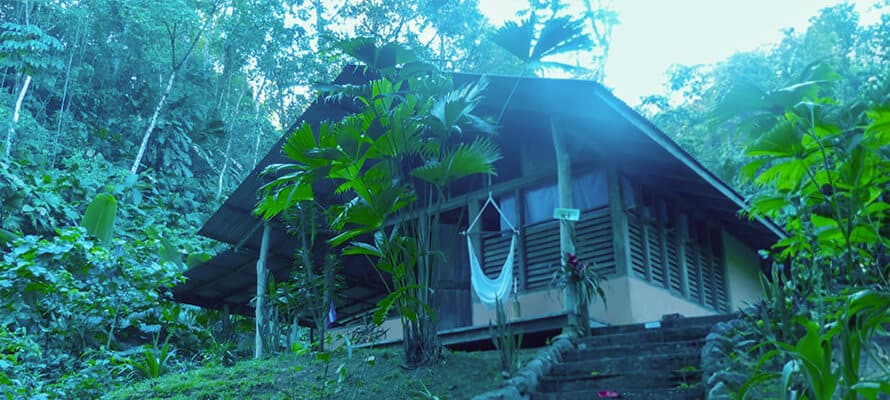
El Tigre Ranger Station is actually located outside of Corcovado National Park, and it doesn’t connect to the other sectors of the park. However, it’s only a 15-minute drive from Puerto Jiménez, so it’s in a really convenient location for a quick day trip.
El Tigre offers fewer wildlife spotting opportunities than the ranger stations deeper in the park, but it is in an ideal location for spotting insects and reptiles.
Best Activities and Attractions in Corcovado National Park in Costa Rica
Now that we have all those logistics out of the way, let’s dive into some of the best things to do while you’re in Corcovado National Park.
Wildlife Watching
Wildlife viewing is the main attraction in Corcovado National Park, and it’s why so many tourists prioritize visiting this national park despite its distance from the major airports in Costa Rica.
Corcovado National Park is home to 140 mammal species, 370 bird species, and more than 10,000 insect species — including endangered animals like tapirs, jaguars, cougars, ocelots, giant anteaters, crocodiles, and harpy eagles. Keep reading for an overview of the many animals you’ll have the chance to see in Corcovado National Park.
#1
Land Animals
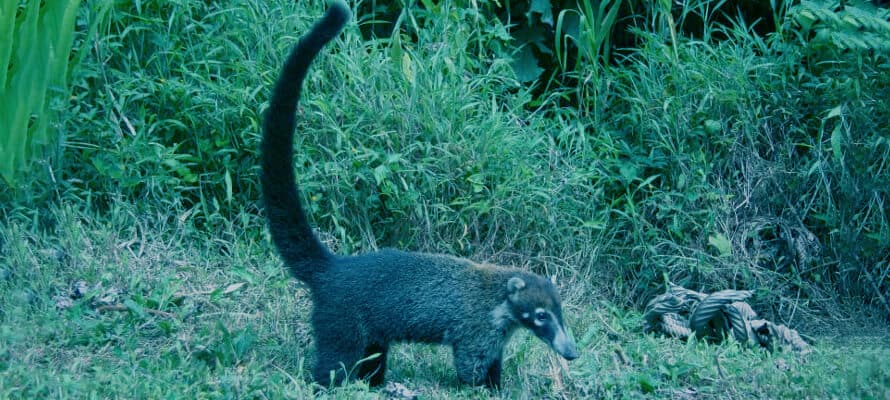
Corcovado National Park is the only national park home to all four monkey species found in Costa Rica — squirrel monkeys, spider monkeys, howler monkeys, and white-faced capuchin monkeys. Squirrel monkeys are the most endangered monkey species in Costa Rica, so spotting one of these little guys during your time in Corcovado National Park is a real treat!
The park is also home to several feline species, including jaguars, cougars, and ocelots, and other rare mammals, like tapirs, three-toed sloths, white-nosed coatis, and white-lipped peccaries.
#2
Marine Animals
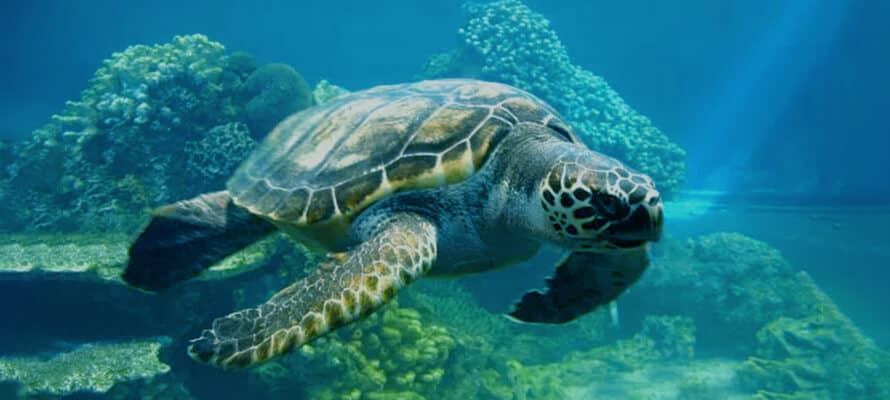
Corcovado National Park is located on a peninsula, which means it is surrounded by water. This means you’ll find plenty of aquatic animals and reptiles in the park.
Watch out for crocodiles and bull sharks when crossing the rivers in this national park — only cross upstream, where the water is shallow. On the beaches, watch for the four sea turtle species found in Costa Rica — green sea turtles, olive ridley sea turtles, hawksbill sea turtles, and leatherback sea turtles. Nearby in Drake Bay and Golfo Dulce, watch for spinner dolphins and humpback whales during the whale-watching season from July to November.
#3
Birds
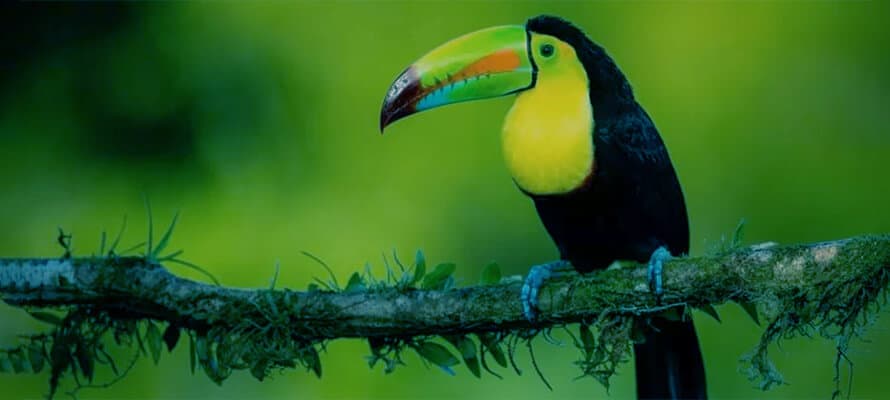
Hundreds of bird species exist in Corcovado National Park, making this spot a dream for birdwatchers. Scarlet macaws, yellow-throated toucans, and pale-billed woodpeckers are just a few birds you’ll spot in this national park. If you’re lucky, you’ll also see harpy eagles — one of the most endangered bird species in Costa Rica.
Hiking Trails
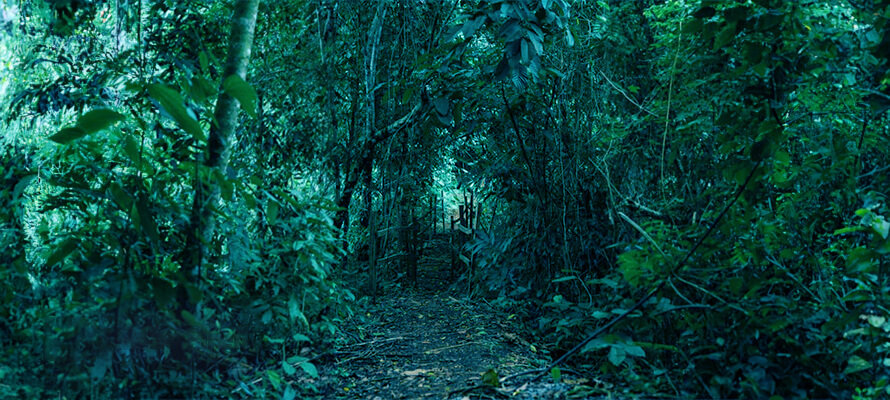
Though wildlife is the main attraction in Corcovado National Park, the hiking trails throughout the park are the primary avenue for spotting these animals.
Most of the hiking trails in Corcovado National Park are located around the Sirena Ranger Station and San Pedrillo Ranger Station. Your guide will know exactly which trails to take, so you don’t have to worry about researching the best hiking trails in the park beforehand.
Best Time to Visit Corcovado National Park in Costa Rica
The best time to visit Corcovado National Park is during the dry season — specifically from January to April. These months are the driest, which is essential to consider, especially if you plan on camping in the park overnight.
We don’t advise visiting Corcovado National Park during the rainy season, specifically in September and October. During the rainy season, trails will be wet and muddy, and the rivers might be uncrossable in some locations. Sirena Ranger Station will even close down during the entire month of October due to the rainy conditions.
What to Bring to Corcovado National Park in Costa Rica
We recommend following your guide’s advice on what to bring on a day or multi-day trip to Corcovado National Park. However, these are some things you’ll want to bring, regardless of whether you’ll be visiting the park for one day, three days, or longer!
- Hiking boots — You will trek through mud, streams, and dirt trails in Corcovado National Park. You will want to wear proper hiking boots!
- Hiking clothes — We recommend wearing a moisture-wicking shirt and pants for hiking in Corcovado National Park. The park is humid, and you’ll likely get sweaty. That said, wearing cotton clothes is not advised. Pack extra clothes for each day you’ll be in the park.
- Sunscreen — Most trails in Corcovado National Park are covered with shade, but some trails, especially the ones by the beach, get a lot of sun exposure. Wear sunscreen (and reapply frequently!) to protect your skin from the sun.
- Bug spray — You’ll be deep in the jungle while visiting Corcovado National Park, so unless you want to get swarmed with bugs, you’ll want to reapply bug spray regularly.
- Hiking backpack — Bring a large enough bag to keep all your gear in but small enough that it won’t feel too heavy while trekking through the park. You’ll cover several miles daily, so you won’t want to be weighed down with a heavy pack.
- Reusable water bottle — Staying hydrated is super important. Bring a reusable water bottle you can fill up at Sirena Ranger Station (or other ranger stations) between hikes.
- Rain gear — Even if you’re not planning to visit Corcovado during the rainy season, the Osa Peninsula is one of the rainiest regions in Costa Rica. Bring a rain jacket and a dry bag to keep your valuables dry, just in case.
- Camera — You won’t have to be lucky to see tons of wildlife in Corcovado National Park. Bring a high-quality camera to capture incredible photos of mammals, reptiles, birds, and aquatic animals in one of the most biodiverse places in the world!
Safety Tips for Visiting Corcovado National Park in Costa Rica
You shouldn’t have any trouble staying safe in Corcovado National Park if you stick with your guide — this is part of the reason why guided tours are required in this national park. However, it’s still wise to keep the following safety tips in mind:
- Watch for poisonous snakes — While it’s unlikely you’ll see many snakes in Corcovado National Park, there are several poisonous snakes in the park, so watch where you step.
- Steer clear of killer bees — Killer bees are more common in Puerto Jiménez than inside the national park. However, they have been known to attack. If these bees attack you, run back and forth instead of in a straight line to escape the swarm.
- Avoid white-lipped peccaries — Peccaries are endangered wild pigs with sharp teeth. Generally, they are not interested in attacking humans. However, they travel in large packs and can be aggressive if startled, so if you notice a group in the park, climb one of the tall trees and stay put until they move on.
- Be aware of riptides — There are often riptides on the beach in Corcovado National Park. Never go swimming without your guide’s permission, and if you get caught in a riptide, swim parallel to the beach until you break free from the current, and then return to shore.
- Cross rivers with caution — During high tide, it’s not unusual for bull sharks, crocodiles, and even hammerhead sharks to be lurking in the rivers in Corcovado National Park. When crossing rivers, cross at the shallowest point and as far upstream as possible.
Stay with Special Places of Costa Rica for a Relaxing Retreat After Exploring Corcovado National Park
After spending a few days on the Osa Peninsula in Corcovado National Park, come up to visit us on the Northern Pacific Coast for some fun in the sun!
Special Places of Costa Rica offers hundreds of vacation rentals, from beachfront homes to luxury villas, in the Guanacaste Province of Costa Rica. Browse our rentals to find the perfect place to stay to relax and unwind after an adventurous trek through the jungle in Corcovado National Park!